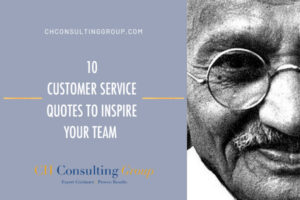The user experience can largely dictate the type of questions that you get from your customers in the form of emails, chat messages, or phone calls. An article published by Forbes entitled “Not Dealing with Failure Demand is Hurting Your Customer Experience”, brings to light some important statistics:
- A sizable percentage (up to 40%) of calls made to UK contact centers are avoidable or unnecessary (2012 Research).
- A 2018 Customer Experience Automation Study, by Eptica, estimates that inquiries made via inbound calls cost UK brands over £4 billion every year. The cost rises when you factor in chat, social media, and email inquiries.
Avoidable or unnecessary phone calls are usually concentrated around information that a customer should ideally be able to source themselves, easily and effortlessly. These are simply the basics such as “Where is your shop located?’’, or, “I lost my purchase receipt, how can I get a copy?”
Here are five of my top recommendations for optimizing your user experience so that your company isn’t losing money on calls you really shouldn’t be getting:
1) Must-Have Components of a Business Website
Customers are increasingly media-savvy and know what to look out for when skimming for information on a business site. However, it is best to make it as easy and fast as possible for them to find the information they are looking for so that they will not need to call for basic information. While many elements have to come together to create a site that sells and is user-friendly, from the perspective of the end-user, these are the essentials:
- About Page – Provides details about the company, what it does, and the products or services it provides.
- Contact Us Page – Your contact information page should ideally include the various ways customers can get in touch with your brand such as email, chat, form submission, ticket submission, forum, customer service phone numbers, and social media channels.
- Social Media Icons – Provide social media icons on your site so that customers can find your social media pages. Some customers may want to contact you through these channels.
- Locations Page – This page lists the addresses and phone numbers of all the locations that come under the brand. Customers also find the inclusion of location maps very useful.
- Products / Services Page – The products or services page shows and explains what your products and services are.
- Frequently Asked Questions (FAQs) or Help Guides – FAQ pages list common questions that users generally have and their corresponding answers. Offering troubleshooting guides and videos can also be very helpful.
- Blog Articles – Blog articles also provide information to customers about your niche as well as your products and services. They help to build credibility for your brand and can also be utilized in newsletters and social media posts.
- Policy Pages – Policy pages can include pages such as privacy policy, return policy, user policy, and shipping policy.
- Search Field – It’s important to include a clearly visible search bar at the top of your site so that customers can quickly search the site for information. A site that lacks this feature can make it hard for customers to find the information they are looking for.
- Testimonials – Customer testimonials can help potential customers to get answers about products or services from the point of view of customers who have already tried them.
2) Omni-Channel Presence
Another aspect that needs to be considered is how accessible your business is. Is your business mobile-friendly? Do you have any apps that can make usage of your products or services easier for customers? Are you available on social media platforms that are relevant to your business?
3) Designing for Ease of Use
No discussion on the customer experience is complete without dipping into the subject of designing for ease of use. Installing a heatmap on your website is a great way to understand and analyze user-behavior patterns on your site.
4) Designing for User Experience
Another aspect to look into is how well your site is designed for the user experience. For example, is your website clean, uncluttered, organized, and well laid out? Many frustrated inbound calls are often made by customers who are struggling to locate information that is otherwise available on the site.
5) Customer Feedback
Last but not the least, and this cannot be emphasized enough, gather customer feedback in the form of surveys (read my tips on how to do surveys the right way, here). Remember to always test before going live.
Does your website include all the necessary elements for an optimal customer user experience? We can review your site and help you to optimize it as much as possible to save both you and your customers time and money. Get in touch with us today.



